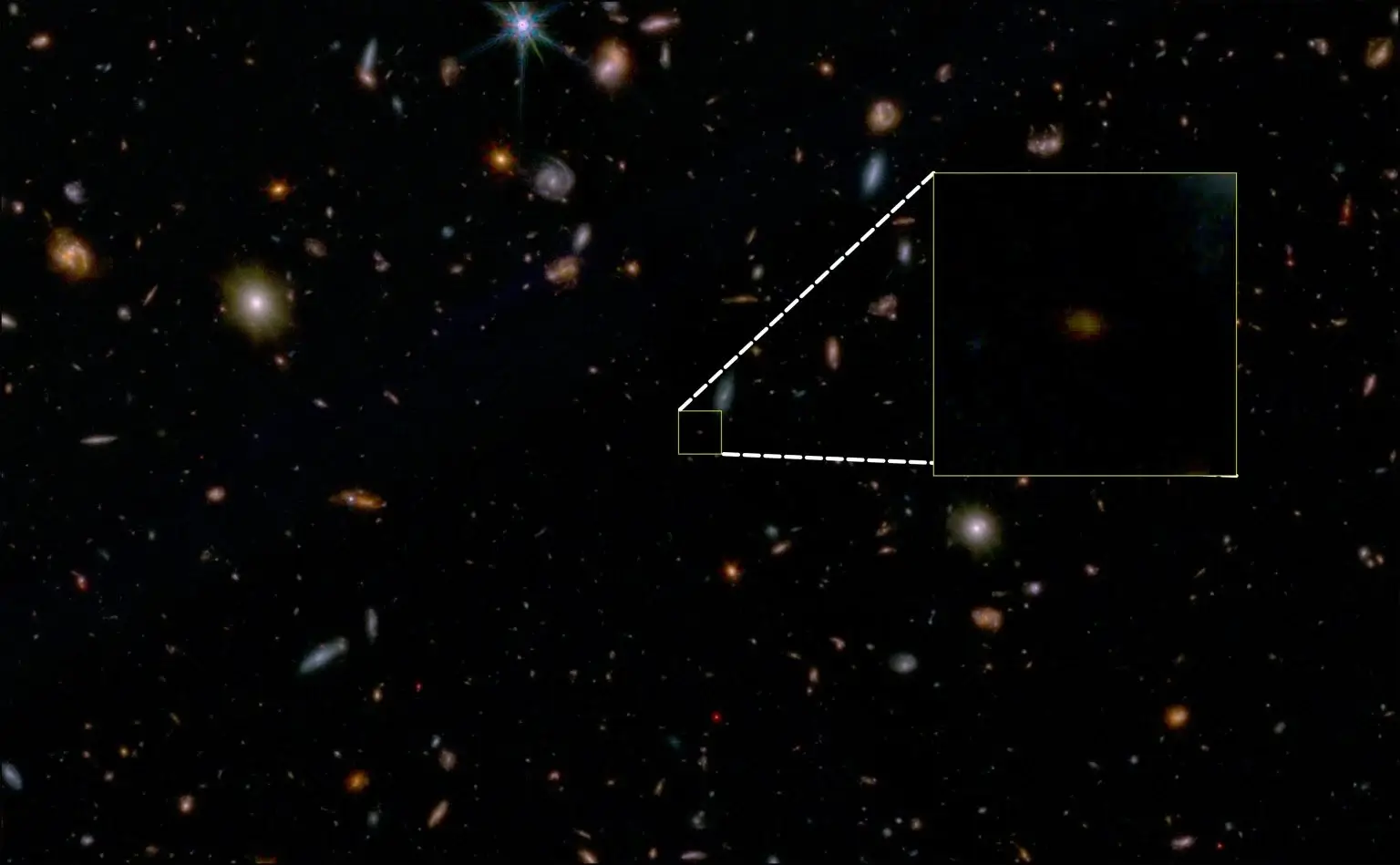This galaxy experienced a tumultuous and fast life: the star formation process worked quickly and suddenly ended, a situation that is not expected at such an early stage in the evolution of the universe. It is still unclear whether the "frozen" state of the galaxy is temporary or permanent, and what is the reason for the cessation of the star formation process

Researchers have discovered one of the oldest "dead" galaxies, observed 13 billion years after the process of star formation in it ended, using the James Webb Space Telescope. The finding challenges the prevailing assumptions regarding the processes of galaxy development and star formation in the early universe. Credit: SciTechDaily.com
With the help of the James Webb Space Telescope, an international team of astronomers led by the University of Cambridge and in collaboration with LJMU, identified one of the oldest "dead" galaxies observed so far, at a time when the universe was only 700 million years old.
This galaxy experienced a tumultuous and fast life: the star formation process worked quickly and suddenly ended, a situation that is not expected at such an early stage in the evolution of the universe. It is still not clear if the "frozen" state of the galaxy is temporary or permanent, and what is the reason for the cessation of the star formation process.
The results, published March 6 in the journal Nature, may help astronomers understand how and why galaxies stopped forming new stars, and whether the factors influencing this process have changed over billions of years.
"The first period of the universe is considered to be a very active phase, during which many gas clouds collapsed to form new stars," said Tobias Loser of the Kawli Institute for Cosmology, lead author of the paper. "To form new stars, galaxies need a rich supply of gas, and the early universe offered an ideal environment that resembled an open buffet."
"It is only at a later stage of the universe that we start to see galaxies that stop forming new stars, whether because of a black hole or other reasons," noted Dr. Francesco D'Augnio, a research associate from the Cavalli Institute for Cosmology.
Astronomers believe that there may be a number of factors that slow or stop the star formation process, all of which can cause a galaxy to experience a shortage of the gas needed to form new stars. Internal factors, including a supermassive black hole or intragalactic processes, can cause gas to be ejected from the galaxy, resulting in a rapid cessation of the star formation process. Alternatively, the gas in the galaxy may be formed too quickly in the star formation process, without being replaced in time by new gas from the galaxy's environment, which would lead to a situation where the galaxy is "hungry" for gas.
Dr Renska Smith, a member of the investigation team from Liverpool John Morse University, says: "We know that there are 'dead' galaxies in our nearby universe, which do not produce new stars unlike our own Milky Way. However, we do not know how or why this happens. The fate of this galaxy is still unknown. It can become a 'dead' galaxy, or it can come back and regenerate."
Thanks to data from JADES (JWST Advanced Deep Extragalactic Survey), the astronomical team determined that the galaxy experienced a short but intense period of star formation, in a period ranging from 30 to 90 million years. But between 10 and 20 million years before the capture observed by Webb, star formation stopped abruptly.
In addition to being one of the oldest, the galaxy also has a relatively low mass - similar in mass to the Small Magellanic Cloud, a dwarf galaxy near the Milky Way, although the Small Magellanic Cloud still produces new stars. Other quenched galaxies observed in the early universe were much more massive, but the improved sensitivity of the Webb telescope allows smaller, fainter galaxies to be observed and analyzed as well.
The astronomers emphasize that although the galaxy appears 'dead' at the time of observation, it is possible that in the 13 billion years that have passed since then, it has come back to life and started to form new stars.
The research was partially supported by the European Research Council, the Royal Society, and the Science and Technology Facilities Council (STFC), part of UK Research and Innovation (UKRI).
More of the topic in Hayadan:
